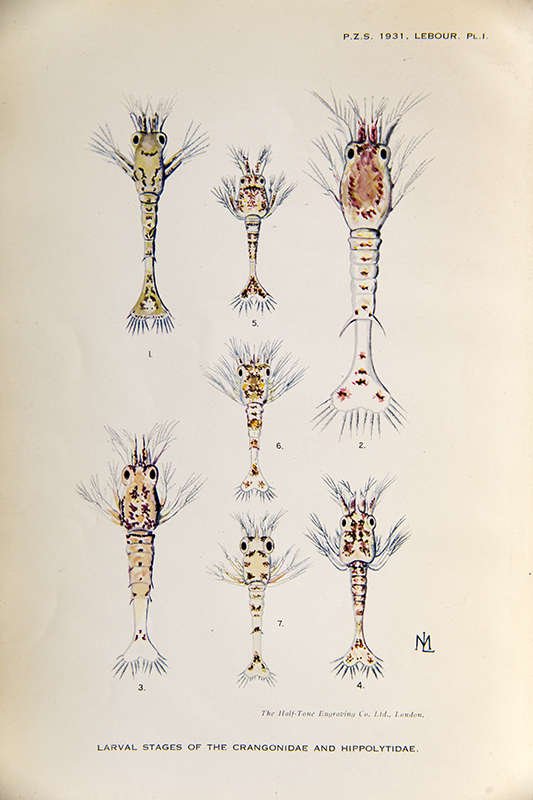Half-Hidden Histories is a blog series on some insanely cool people, places, and things you probably didn’t learn about at school. First up is the life of a truly remarkable marine biologist whose legacy still lives in academia today…
Marie Lebour (1876-1971)
Worldwide, children know the name of groundbreaking female scientist Marie Curie, but it is sadly likely that not as many will know of Dr Marie Lebour. She was an expert on microplankton, crustaceans, and molluscs. Lebour made huge contributions to the field of marine biology in the twentieth century, publishing a staggering 175 works during her career, some of which continue to be used by students and researchers to this day.

Marie Lebour was born in Northumberland as the youngest of three daughters. Her mother was a London surgeon; her father a professor of geology from a French family. Marie’s scientific curiosity long preceded her education in the subject—her father would regularly take her with him on his expeditions, where she would collect specimens for her own collections. She went on to publish her first research paper on land and freshwater molluscs in 1900. After previously studying art, Lebour moved on to Durham University to study zoology. Here she attained associate, bachelor’s, and master’s degrees, before being awarded her doctorate in 1917. Alongside her studies, she worked as an associate lecturer and demonstrator—both in her own Durham and the University of Leeds!
In 1915, Lebour joined the Marine Biological Association’s laboratory in Plymouth. The Marine Biological Association had been particularly hard hit by the wartime deployment of several key researchers, and Lebour was essentially loaned from her position at the University of Leeds ‘for the duration of the war’ (which then was expected to end in 1916). However, she adapted well to her new environment and even managed to secure herself a permanent post at the MBA, where she worked until her ‘retirement’ at 70. Even then, Dr Lebour continued to undertake work there up until 1964, when ill health put a stop to her professional research at the age of 88.

Lebour’s art studies proved useful in her observational science. She was a very observant woman who worked well with ‘almost primitive’ equipment, consistently illustrating her findings in the field. Her illustrations and watercolours would often form part of her research publications. She worked hard and maintained a solid output of research, even while dealing with her mother’s illness and eventual death in 1937. After this, Marie was free to travel and soon arranged to join an expedition to Bermuda, to study crustacean larvae.
But with WWII looming, this was unfortunately Lebour’s only trip abroad, and it was a harrowing one. One dark evening, she and a scientist from the Rockefeller Institute went out in a small rowing boat. In the process of dredging for algae, the boat capsized. Neither of them could swim. Marie survived by holding tightly to the ship and calling for help—but her companion sadly disappeared, and his body was found the next day.
Lebour’s contributions and achievements in the field of science are legion, but notable among them are a medal from the king of Belgium for her classification of natural history collections, the discovery of 28 new species of microplankton, intensive survey of the marine life of Plymouth Sound, and her extensive use of the newly invented plunger-jar to more successfully rear and study many marine species under lab conditions at a time when similar projects usually failed.
According to those who knew and worked with her, Marie was ‘never still’—always in motion, infectiously kind and happy, and particularly good with children. Today, the Marine Biological Association holds the Marie Lebour Library as part of their special collections: containing her published papers, some of her watercolours, and her personal library. A full listing of her published works at the end of her obituary runs five pages long! A methodical researcher and reportedly joyful spirit, it is a shame Dr Marie Lebour is not more widely known. Even my trusty Oxford DNB does not list her. What a remarkable person.
References and Further Reading
Entry on the Natural History Society of Northumbria – includes links to some of Lebour’s research hosted on Archive.org
Obituary (Journal of the Marine Biological Association, UK) – a more detailed dive on her life, with a full listing of her published works
Very interesting read Shannen, keep them coming 🙂
LikeLike